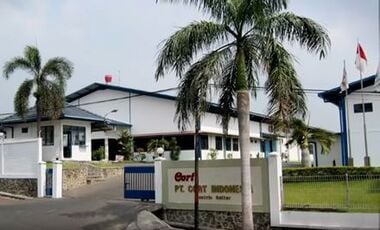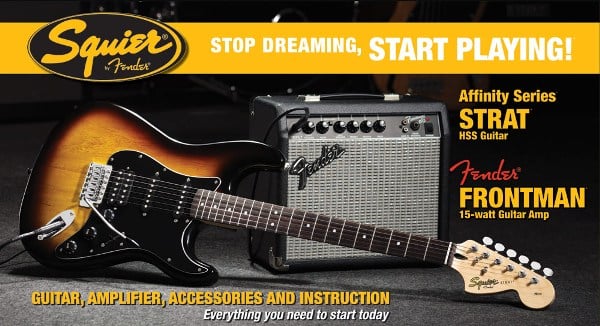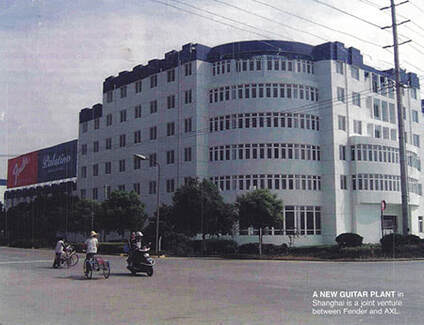In the early '90s, Korean Squiers were turning out to be a big failure because their plywood-body guitars were subject to severe negative marketing, and Squier looked close to collapse. Its competitors were attacking the Squier brand by offering more features, better woods, and more colors and finishes at the same price points where Squier lived.
Hence, Fender needed still cheaper Squiers, and from 1994 China became the new source, followed a few years later by Indonesia. China had a large supply of wood, which meant that they could make hardwood-bodied instruments at plywood prices, and Indonesian guitars are generally lower in price with equivalent quality to those produced in Korea.
China and Indonesia soon became important sources for Squier, with factories such as Yako, AXL, Dallian Dong Fang, and Grand Reward in China, and Cort-Tek and P.T Samick in Indonesia. Apart from AXL, which was a joint venture, all other factories were Original Equipment Manufacturers (OEM). OEM is a company that manufactures products or parts of a product for another company, which sells them to its customers under its own branding.
Hence, Fender needed still cheaper Squiers, and from 1994 China became the new source, followed a few years later by Indonesia. China had a large supply of wood, which meant that they could make hardwood-bodied instruments at plywood prices, and Indonesian guitars are generally lower in price with equivalent quality to those produced in Korea.
China and Indonesia soon became important sources for Squier, with factories such as Yako, AXL, Dallian Dong Fang, and Grand Reward in China, and Cort-Tek and P.T Samick in Indonesia. Apart from AXL, which was a joint venture, all other factories were Original Equipment Manufacturers (OEM). OEM is a company that manufactures products or parts of a product for another company, which sells them to its customers under its own branding.
MAIN CHINESE FACTORIES
The Taiwan-based Yako Musical Instruments Company was the first company to produce Squier guitars under OEM agreement in China. Yako was established in 1993, was headquartered in Taiwan, and had factories there and on the mainland. Early plant management was all from Taiwan, but Squier instruments were built in the factory located in Zhangzhou, in southeastern China, about 300 kilometers from Hong Kong.
Yako received its first Squier order in May 1995, delivered in August, for 2,000 Squier Bullet SRS Stratocasters. These guitars were manufactured since late 1994 and were identical to the previous Korean Bullets. They had in common the plywood body and the low-quality hardware, but they featured a neck plate stamped with the words “MADE IN CHINA” and the serial number composed of the NC prefix followed by a 6-digit number.
In the following years other Bullets have been made, but, as had happened in the past, they were not all considered real Stratocasters, rather only “Bullet” models.
Yako received its first Squier order in May 1995, delivered in August, for 2,000 Squier Bullet SRS Stratocasters. These guitars were manufactured since late 1994 and were identical to the previous Korean Bullets. They had in common the plywood body and the low-quality hardware, but they featured a neck plate stamped with the words “MADE IN CHINA” and the serial number composed of the NC prefix followed by a 6-digit number.
In the following years other Bullets have been made, but, as had happened in the past, they were not all considered real Stratocasters, rather only “Bullet” models.
AXL Musical Instruments had multiple factories located in China since the late 90’s and produced Squier guitars for Fender with serial number CA and CAE.
In 2004, a highly automated guitar factory in Shanghai was the culmination of a joint venture between Fender Musical Instruments Corporation and AXL Musical Instruments.
Opened with great fanfare on October 18, just before the Shanghai Music Fair, the new 200,000-square-foot plant would have produced Fender's Squier branded guitars that would be sold at first in the Chinese domestic market and South America, then also outside of China.
In 2004, a highly automated guitar factory in Shanghai was the culmination of a joint venture between Fender Musical Instruments Corporation and AXL Musical Instruments.
Opened with great fanfare on October 18, just before the Shanghai Music Fair, the new 200,000-square-foot plant would have produced Fender's Squier branded guitars that would be sold at first in the Chinese domestic market and South America, then also outside of China.
|
Both AXL and Fender representatives were extremely enthusiastic about the new undertaking. Fender Chairman and CEO Bill Schultz explained: “We needed to build a stronger position in the fast-growing Chinese market, and this was our best option. We are excited to be working with AXL Musical Instruments and believe that this new plant will play an important role as Fender supplies the world with quality guitars and amplifiers. The immediate benefit is to gain more control over the range and quality of products manufactured for our rapidly growing China and South America markets.”
|
Squiers manufactured in the new factory featured a CXS serial number.
At the time of writing (2023), Axl Marketing, and Administration offices are located in Hayward, CA, USA, with their manufacturing hub centered in China. They ship internationally from their warehouse facilities conveniently located in Shanghai, China’s largest seaport.
At the time of writing (2023), Axl Marketing, and Administration offices are located in Hayward, CA, USA, with their manufacturing hub centered in China. They ship internationally from their warehouse facilities conveniently located in Shanghai, China’s largest seaport.
Grand Reward Education & Entertainment (GREE) was established in October 1995 by Mr. C. W. Tsai and served more than ten OEM customers including Squier, as well as promoting its own brand name, Farida.
The 120,000 sq. ft. Grand Reward factory was located in Guang Dong province, in southern China, on 180,000 sq. feet of land. Here, 900 employees, including highly skilled production staff, handcrafted 13,000 instruments monthly, exported around the world - 55% of production output went to the USA, and another 20% was exported to Japan.
The 120,000 sq. ft. Grand Reward factory was located in Guang Dong province, in southern China, on 180,000 sq. feet of land. Here, 900 employees, including highly skilled production staff, handcrafted 13,000 instruments monthly, exported around the world - 55% of production output went to the USA, and another 20% was exported to Japan.
INDONESIAN FACTORIES
 PT Cort factory, Indonesia
PT Cort factory, Indonesia
Cort Guitars (a subsidiary of Cor-Tek Corporation) was a South Korean guitar manufacturing company located in Seoul that produces instruments under OEM contracts for many other companies. In 1995, Cort opened its P.T. Cort facility in Surabaya, Indonesia, which produced Squier instruments.
Samick Musical Instruments Co., Ltd. was originally a South Korean musical instrument manufacturer. In 1992, Samick built its P.T. Samick factory in Cileungsi, near Bogor, Indonesia, in an area of 50 hectares with 11 buildings. The new factory offered work for around 3,000 employees and produced both acoustic and electric guitars under OEM contracts for various major brands including Squier.
Samick Musical Instruments Co., Ltd. was originally a South Korean musical instrument manufacturer. In 1992, Samick built its P.T. Samick factory in Cileungsi, near Bogor, Indonesia, in an area of 50 hectares with 11 buildings. The new factory offered work for around 3,000 employees and produced both acoustic and electric guitars under OEM contracts for various major brands including Squier.
Squier Pak and team squier garage to glory
|
Thanks to the idea of Joe Carducci, then Marketing Manager for Squier, in 1997 Squiers began to be sold in packs, or, as it was rendered in Fender-speak, in Paks. This could seem obvious now, but it was a very innovative idea: take a cheap guitar, a small amp, a cord, a strap, a gig bag, strings, picks, and a how-to tutor, put them all in a box, and sell it to parents who want to buy the kid an electric guitar but who know nothing of the subject. All at bargain prices.
|
In 2004, a new slogan was seen attached to Squier Pak publicity, “Stop dreaming, start playing,” which summed up the brand’s new-found confidence.
|
“We wanted to create a phrase that reached people on an emotional level rather than leaving it to specs or features,” Justin Norvell said. “And knowing that so many young people imagine themselves as rock stars in their bedrooms in front of the mirror and that many older beginners would love to play but find it hard, we felt it was a call to action on all of these levels.”
In 2005, in order to engage young guitarists, Squier opted to forgo the usual ‘established artist’ photos featured in Fender Frontline and instituted ‘Team Squier Garage to Glory’ to showcase the people that live and breathe Squier instruments every day. This contest was open to all guitarists from 16 to 25 who had only to send by e-mail a photo of their band – posed or in action – with their Squier guitars and include the band name. The winners appeared in next year’s Frontline, which went out to more than 1 million people all over the world. |
fender modern player
By now Chinese lutherie had developed so much that at the end of 2011, the first Fender-branded instruments made in China appeared on the list. The Fender Modern Player Series manufactured in Grand Reward factory included traditional models with small modernities destined for young and penniless "modern players": Telecaster with a humbucker, Jaguar without the pickguard, mahogany instruments, Stratocaster HSH, etc...
CHINESE AND INDONESIAN MAIN SERIES
Antonio Calvosa






